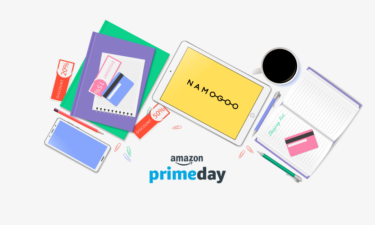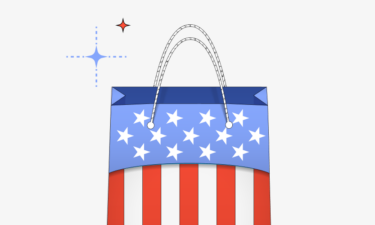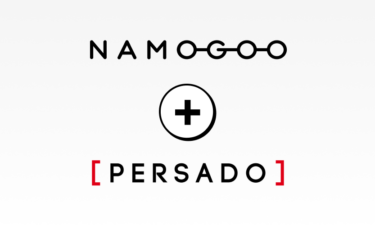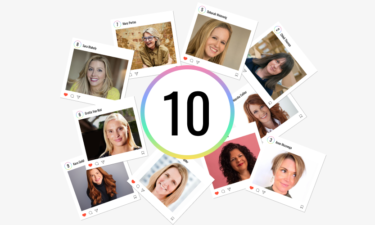Bonus material: 5 Types of Customers & What Motivates Them Guide
by Namogoo & Microsoft
According to the psychology of discounts, certain pricing strategies motivate people to buy while others actually ruin your chances of conversion.
And if you don’t know the fundamentals of pricing psychology, you may be doing more of the latter instead of the former (without even realizing it).
Neuromarketing researchers have been studying this phenomenon for decades. These behavioral psychologists use neuroscience to figure out the subconscious decision-making processes consumers use when deciding to buy.
So in this guide, you’ll learn what the research on effective discounting shows and why the eight psychologically-backed discount strategies in this guide work. Then you’ll be able to improve your conversions while protecting your brand perception (the ultimate win).
You’ll even find out how to avoid the most common pitfalls and discover a smarter way to handle incentives in your sales promotion strategy moving forward.
The Psychology Of Discounts: Why (& When) Consumers Are Drawn To Deals And Coupons
8 Discount Psychology Principles To Drive eCommerce Sales
How to Use Discounts Intelligently, Strategically, and Effectively
Intent-Based Promotions Boosts the Effectiveness of Your Discounts
Start Using These Psychology-Backed Discounts in Your Marketing Strategy Today
The Psychology Of Discounts: Why (& When) Consumers Are Drawn To Deals And Coupons
Discounts may seem simple enough. After all, who doesn’t like saving money?
But pricing psychology goes deeper than just liking a good deal or taking advantage of discount bundles.
Researchers have uncovered specific psychological motivators that draw shoppers to certain types of promotions and encourage them to buy. Because when consumers find a good offer, it actually changes the way they think and feel.
After participants in one study scored a major discount, it led to feelings of excitement, pleasure, happiness, and other positive outcomes[*].
Researchers in another study confirmed these findings[*], determining that people who received a discount increased their levels of the “feel good” hormone known as oxytocin. This spike in positive feelings was higher post-discount than when they received an outright gift!
Plus, when those participants snagged the right coupon, they experienced less stress — their heart rates, perspiration, and respiration all decreased — while feeling on average 11% happier.
So on top of making people feel good, discounts give consumers agency. Buyers will continue to seek out deals to keep those good feelings flowing. And this may motivate them to pull the trigger and convert, even if they were previously on the fence about purchasing.
These statistics prove it.
Psychology of Discounts Statistics
Surveys done by the coupon marketplace RetailMeNot found the following:
- Nearly 70% of millennials will look for a deal before making a purchase.
- Two-thirds of people say they’d make a purchase if they had a coupon, regardless of whether they initially planned to buy something.
- 80% admit they’d try a new brand if it offered them a discount.
- 48% of people will steer clear of brands that don’t offer deals[*].
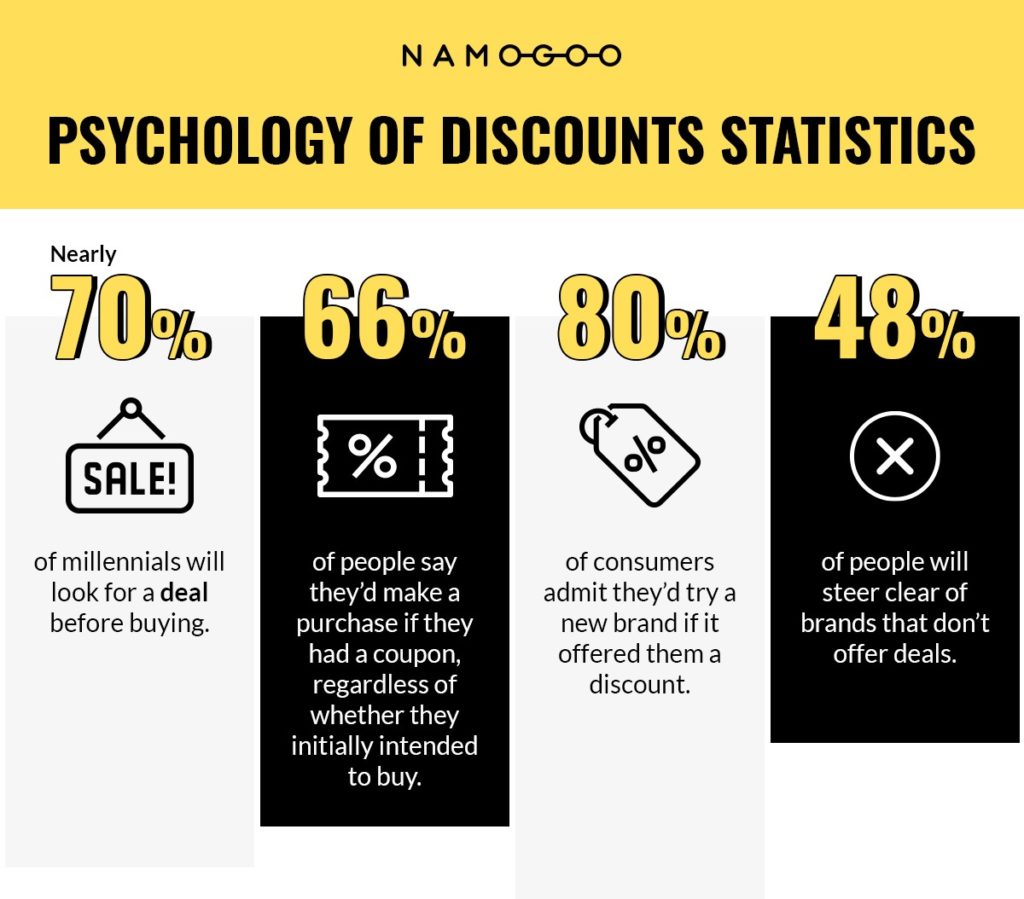
Yet even though discounts drive sales and make consumers feel good about purchasing, they can also harm your brand’s customer perceived value.
That’s why you must use the right pricing strategies, at the right time, for the right customers.
Let’s talk about how to do that.
8 Discount Psychology Principles To Drive eCommerce Sales
These eight discount strategies are backed by psychology and extensive neuromarketing research. They’re considered effective discount because they can evoke those feel-good-feelings, increase conversions, and improve the perception of your brand.

#1. Use The Rule Of 100 (Also Known As $ Off Vs A % Discount)
#2. Understand and Protect Perceived Value
#3. Play On The Scarcity Versus Urgency Mindset
#4. Change Your Font Size — But Bigger Isn’t Always Better
#5. Don’t Ask Customers To Do Hard Math; Make Discounts Easily Computable
#6. End Your Discount Pricing In .99 Instead Of .00
#7. Offer Monthly Rather Than Annual Payment Options
#8. Don’t Underestimate the Power of Free
#1. Use The Rule Of 100 (Also Known As $ Off Vs A % Discount)
What does science say about the “% off vs $ off” debate?
Jonah Berger, marketing professor and author of Contagious: Why Things Catch On, theorized and tested how people perceive a percentage discount versus a dollar-off discount promotion. And through his work, Berger developed “The Rule of 100.”
According to his research:
- A percentage discount is more appealing to consumers for items under $100. So 10% off a $50 sweater sounds better to buyers than giving them $5 off, even if they’re the same discount.
- A dollar-off discount works better for items priced over $100. On a $1,000 computer, people were more likely to buy when they received $200 off versus a 20% discount, despite the deal being the same.

Why does the Rule of 100 work like this? Berger attributes it to a principle in psychology known as framing.
Based on how it’s presented, a percentage off a small-ticket item (under $100) seems like a bigger discount than a few bucks. But buyers of big-ticket items (over $100) need to see a large chunk of money come off that higher price immediately.
So consider your price tag when deciding whether to advertise a percentage discount or straight cash-off, and you may find more success.
#2. Understand and Protect Perceived Value
Not every brand, type of product, or type of customer responds well to discounts.
In many cases, discounting can hurt the perceived value of the product and brand.
Perceived value is defined as what a consumer feels the value or worth of a product is, and it’s subject to be influenced by discounting (especially when the customer’s intent to purchase is low).
In research conducted on buying jeans at a discount, researchers discovered that consumers placed a higher value on the jeans when they were at a higher discount[*].
But this doesn’t always happen.
When it comes to luxury items, the opposite is true.
One study found that, when luxury items were discounted, they were seen as inferior due to being out-of-season already or less popular, making them less desirable[*].
In this case, the original price served as the anchor for whether the item was high-quality or not. And when the price dropped, consumers viewed the product as being lower in quality and less appealing.
Another study confirmed these findings and suggested that luxury retailers should tread lightly when offering too many discounts since it can reduce the perceived value of items[*].
The take home message here is clear: not every product should be given a discount, and especially not a substantial one in some cases.
A better approach would be to consider your customer’s intent when crafting your discount pricing strategies and don’t throw out deals for the sake of driving more sales if it could lead to a decrease in your brand’s perceived value.
#3. Play On The Scarcity Versus Urgency Mindset
You’ve heard of FOMO, or the fear of missing out.
The idea behind this principle is that people don’t want to miss out on something awesome. Whether that’s a night partying with friends or a discount promotion that won’t last long, FOMO is real.
To avoid that FOMO pain, most people will act sooner rather than later, so they can get in on the action. And that’s exactly what scarcity and urgency sales tactics play on.
- Flash sales create a sense of urgency. Buyers know deals will only be available for a limited time, which means they need to take action right away instead of waiting. If they don’t, they’ll have to pay full price later as a result.
- Low-stock or limited-inventory sales create a scarcity mindset. If people know something they’re eyeing is about to run out, they’ll be more likely to buy it before it’s too late and gone forever.
Combine both tactics — in a flash sale of inventory close-outs, for example — and you’ll double-down on the FOMO effect to boost conversions and clear out inventory simultaneously.
Buyers won’t want to miss out on a deal or lose their chance to buy something before it disappears, so they’ll feel the urge to act quickly instead of dilly-dallying.
#4. Change Your Font Size — But Bigger Isn’t Always Better
Your font sizes can have a significant impact on whether your sale looks enticing to customers.
According to research, your font size has the power to make a deal feel bigger (or smaller) in the eyes of consumers[*]. But this may not be in the way you would have guessed.
Your sale price should be in a smaller font, whereas your discount should be advertised using a larger one.
Researchers say a smaller sales price makes consumers feel as if they’re really paying less for the item. And the larger discount may help them feel as if they’ve scored a bigger win.
Andy Luttrell, a social psychologist and expert in price psychology, shared a study where roller skates were advertised for $239 and on sale down to $199.
When A/B testing pricing, half the study participants saw a slightly smaller sale price tag than the original. The other half of participants saw a slighter larger sale price compared to the original price.
As it turns out, those who saw the smaller sale price believed the skates were not as expensive. They admitted that they’d be more likely to buy them as a result.
So when you’re A/B testing discounts, try decreasing the font size of your sale price and increase the font size of the advertised discount (i.e., your dollar-off or percentage-off amount).
#5. Don’t Ask Customers To Do Hard Math; Make Discounts Easily Computable
Whether consumers can quickly and easily calculate your discounts plays a big role in whether they’re motivated to take action and buy.
Here’s what the research shows:
- People don’t like doing math or having to perform complex calculations.
- Discounts that are easy to calculate are seen as bigger.
- The simpler you make your discount, the better[*].
If you decide to discount a $15 item down to $10, for example, people can easily see that they’ll save $5. However, if you price an item from $14.99 down to $9.96, they may not be able to quickly realize they’re still getting $5.00 off — and, in this case, more than $5 off.
So don’t shoot yourself in the foot by confusing people with math problems.
Even though these discounts essentially convey the same information, people’s perceptions of them make a difference in whether and how fast they scoop up your deal, which is why understanding the psychology of discounts is so helpful.
#6. End Your Discount Pricing In .99 Instead Of .00
Consumers are more likely to buy something with a price tag ending in .99 than they are when it ends in .00, according to one study[*].
In that research, scientists made all the prices in a catalog end in either .00 or .99, depending on the copy participants received.
They learned that people buying from the catalog with prices ending in .99 bought more and spent more money than those with the .00 price tag ending catalog.
Now, it may seem illogical since we’re only talking about a penny here, but, psychologically speaking, prices look lower when they’re slightly under that .00 mark. That’s why .99, .98, .97, and .96 price endings work so well (and why you’ll see them used often, especially for sale and clearance items).
So consider how your prices are listed, and A/B test your discount prices to see if you notice similar results. You may find that simply going below that .00 price ending leads to more sales.
#7. Offer Monthly Rather Than Annual Payment Options
Many subscription businesses offer consumers a discount when they pay an annual membership price upfront versus paying a higher amount each month.
So an interesting body of research presented in Harvard Business Review examined the pricing psychology of using monthly versus annual payment options[*].
They researched whether it was more beneficial to have consumers pay for a gym membership each month or pay for the entire year upfront. Want to guess which fared better?
Researchers determined that monthly payments were actually better for business.
Monthly payments led to higher consumption rates. In this case, people were more likely to go to the gym and take advantage of their membership often when they paid monthly.
This, along with customer retention and lifetime value, is one of the reasons why more and more companies are implementing product subscriptions or even being built upon a subscription model, like Dollar Shave Club.
This is due to the fact that buyers were reminded of their spending each month and chose to “get their money’s worth” instead of wasting it.
Participants who paid their memberships annually took the financial hit early on. But then this payment faded over time, along with their use of the membership.
You may be thinking, Why does this matter if I get paid in both scenarios?
Here’s why:
When it came time to renew, those who paid monthly had no problem renewing their membership since they used it often and saw its value. On the flip side, annual members who paid but ended up tapering off were less likely to renew when the time rolled around.
Because these people weren’t “consuming” as often as their monthly counterparts, they didn’t feel as motivated to keep up with their renewals.
So while you may have captured your revenue early in the year, you’ll be less likely to recapture it in subsequent years, which is not a good thing. And if you’re seeing these higher churn rates, that discounted annual plan may be to blame.
This is one scenario where a discount may not be in your or your customers’ best interests.
#8. Don’t Underestimate the Power of Free
Freebies can be a double-edged sword. While they can attract and engage customers, they can also lower your brand perception and cause a negative profit margin if you’re not careful with them.
In the popular book, Predictably Irrational, best-selling author and behavioral psychologist Dan Ariely described the effects of the word “free” on the sometimes irrational minds of consumers.
Students in one of his studies were offered one fancy Lindt truffle for 26 cents or a Hershey’s Kiss for 1 cent. Surprisingly, 40% of them chose the truffle, and 40% chose the Kiss.
However, when Ariely dropped both prices by one penny, a staggering 90% chose the free Hershey’s Kiss.
Ariely and his team then set the price of a Kiss to 2 cents and told students he would give it to them for 1 cent[*]. This discount had zero impact on demand. He also tried lowering the price of the Kiss from free down to a negative cent. Still, no change in behavior surfaced.
His conclusion? The word “free” is highly motivating. It’s a driving force when people make decisions.
Research presented in Psychology Today by Dr. Alain Samson, founder of Behavioral Economics, reiterates this point[*].
Dr. Samson says that shoppers don’t think in rational and linear terms when presented with percentages and prices. For example, they view getting 50% more of something as better than saving 33%, even though the deal works out the same mathematically.
There’s something about getting more for free that drives people one way versus saving the same amount in dollars off.
Like Ariely, Dr. Samson noticed that people react differently when items go down to a zero price point. When a $1 item becomes $0 — as opposed to something worth $2 going down to $1 — people feel like they’re getting a better deal with “free” even though it’s the same $1 discount.
Dr. Samson believes this zero price effect causes people to have a more emotional reaction to the discount, encouraging them to want it more.
The same can happen for your business when you use the word “free.” Consider offering a free welcome gift, free shipping, free returns, or free samples. This may be enough of a motivator to get people to buy from your brand, especially if it’s their first time.
But before you start throwing that word around, consider this next section first.
How to Use Discounts Intelligently, Strategically, and Effectively
While discounts have the power to motivate people to buy, they can also cause some problems, as discussed in this guide on different types of promotions.
Briefly summarizing these potential issues:
- Excessive Discounts Reduce eCommerce Profitability. If you’re using these psychological tactics without considering your margins, you may reduce your profitability so much that it doesn’t make sense to do so (and may actually harm your brand). So keep your margins in mind.
- Too Many Discounts Can Ruin Brand Perception. Throwing all these discounts at customers can cause them to devalue your brand equity, training your customers to expect a discount. To avoid this, it’s best to use these discounts strategically.
The best way to capitalize on the psychology of discounts is to offer different promotions to each customer depending on their specific intent.
With this route, you can send discounts to customers on the fence about making a purchase and not to everyone. This ensures you don’t lose out on customers who would have happily paid full price, or provide discounts to shoppers who have no intention to purchase, thereby risking brand value degradation and price sensitivity.
Your discounts should also be adjusted for both new and existing customers.
New customers may need an incentive to get them to buy, whereas existing customers may just need to feel appreciated (sometimes with a smaller discount) to make another purchase from your brand.
Intent-Based Promotions Boosts the Effectiveness of Your Discounts
Intent-Based Promotions are AI-driven promotions that calculate a website visitor’s propensity to purchase, likelihood to bounce, what will motivate them to buy and the levels of buying intent for the current visit.
These help to diversify your discounts and boost sales while still keeping your brand’s image high as they will only be given to site visitors that display patterns of purchase behavior.
Intent-Based Promotions also knows that is the minimum promotion each visitor needs so it helps to protect your margins and profitability.
Promotions based on shoppers’ intent utilize the most effective principles of the psychology of discounts without overusing them or wasting them on people who may never convert.
And because it’s backed by science, it works!
Brands that have used Intent-Based Promotions report:
- 15% digital revenue increases
- 25% reductions in promotion costs
- 45% less time to purchase
- 15% less journey abandonment
- 20x ROI
Namogoo’s Intent-Based Promotions, allows you to move your promotion budget away from browsers and towards those who actually have intentions to buy. This helps shorten the time it takes for someone to purchase, decreases cart abandonment, drives conversions (obviously), and ensures you’re not wasting your best offers on the wrong crowd.
It even works with visitors who have visited your online store the first time, as Intent-Based Promotions leverages different types of data, including analysis of over 5M monthly consumers online.
While the AI “brain” works hard behind the scenes, you’ll be able to monitor these data points in your dashboard. These will help you understand your customers’ price sensitivity, propensity to incentives, and the products they’re most likely to buy with a discount — intel you won’t find anywhere else.
Start Using These Psychology-Backed Discounts in Your Marketing Strategy Today
These psychology-backed discounts are effective because they’ll make your customers feel good and more motivated to buy.
But if you’re going to use these strategies, make sure you’re doing so strategically and not wasting your time or money. Our data-driven tool will ensure the former, so you don’t have to worry about the latter.




